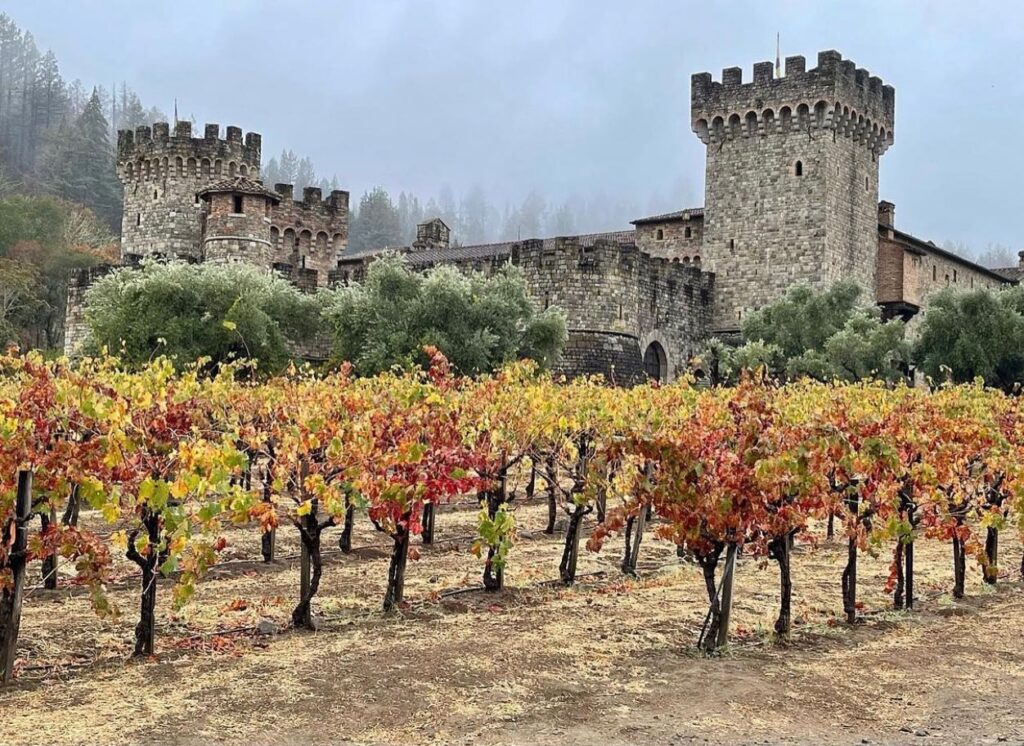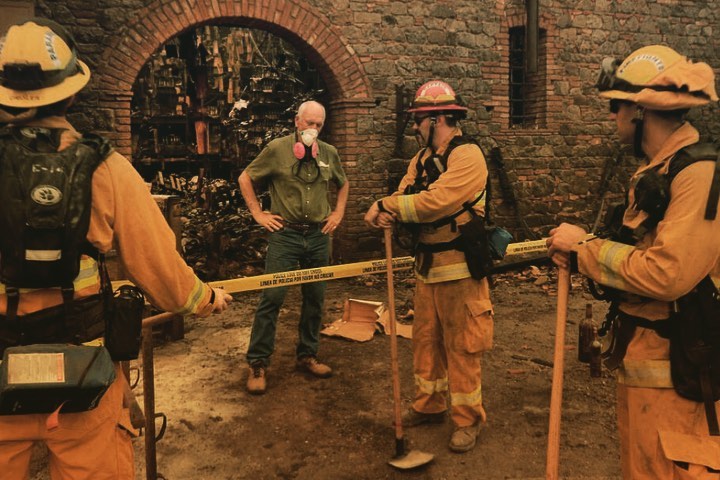It’s hard for wine tourists to miss Castello di Amorosa in Calistoga, California.
After all, it’s pretty difficult for a 150,000 square foot castle to hide among the vines.
The Napa Valley winery is celebrating its 15th anniversary this year. Construction began on owner Dario Sattui’s Tuscan-style castle in 1994, and the winery opened in 2007, two years before construction on the massive structure finally wrapped up.
Sattui designed most of the winery himself. The castle includes multiple courtyards, a chapel, the drawbridge, a watch tower, a torture chamber and secret passageways. It also houses advanced crushing and fermentation facilities, five underground levels and 24,000 square feet of caves all for barrel aging. Winemakers Brooks Painter and Peter Velleno have a wide range of equipment available to them, ranging from custom-designed triple-jacketed cooling fermentation tanks to concrete/ceramic eggs.

Sattui told Vintner Magazine that the draw of the castle and the quality of Castello’s wine had been two factors that had contributed favorably to his winery’s success.
“We make really good wines crafted by Brooks Painter and Peter Velleno,” Sattui said. “We own great vineyards, buy outside grapes from quality vineyards and never cut corners on buying the best equipment and technology available.
“The second factor is that we possess a beautiful building, the castle, which brings visitors to us, availing us the opportunity to sell our wines. We are a medium-sized winery able to sell our entire production direct to the consumer.”
Construction of the castle involved using materials such as antique, handmade bricks and roof tiles, hand-hewn timbers, hand-forged iron gates, lamps and hardware and medieval construction techniques and over 8,000 tons of hand-chiseled local stone to create this architectural gem.
The 150,000 square-foot castle winery that has been thoroughly covered by food, wine, and travel magazines consists of four floors above ground and five floors below ground. It encompasses five defensive towers with battlements, 1,000-pound hand-hewn doors from Italy, a Great Hall with a 22-foot coffered ceiling featuring hand-painted frescoes inspired by medieval Italian frescoes. The castle’s 12,000 square foot Grand Barrel Room features 40 Roman cross-vaults in its brick ceiling. All of the ironwork was hand-forged by Italian artisans over open flames on site during the construction.
It suffered an enormous setback in October 2020, when a detached building of the Castle was destroyed by the Glass Fire, but Sattui and his team are working on fully restoring it with completion estimated in 2023.

Sattui said Castello Di Amorosa keeps its place in a crowded marketplace by making the customer a priority and offering its product at a fair price point..
“The bond one forms with the potential customer is crucial in making the sale,” Sattui said. “The visitor is buying, or not buying, the sales person as much as he/she is buying the wine. If you bond with the visitor it is much easier to sell wine and cement a long term relationship between the customer and winery.
“And of course, most importantly, I do not remember ever making a wine that was not really good, allowing that some vintages are better than others. To my mind you start with a great product that offers quality and value married with taking care of the customer.”








Be the first to comment